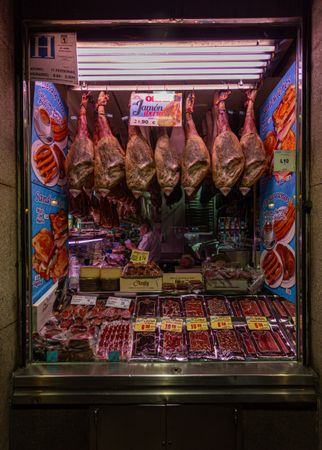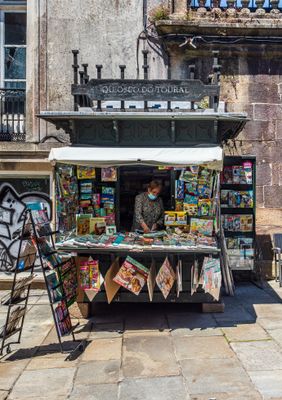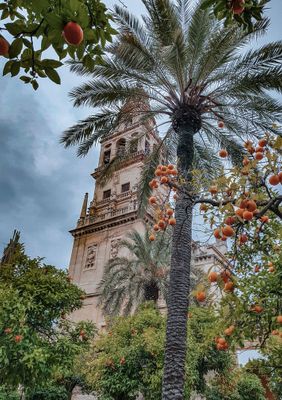Spain Food Guide
Spain is a country that is famous for its food, wine, and culture. It is a land of vibrant cities, stunning beaches, and picturesque countryside. The country is also home to some of the world's most delicious and flavorful cuisine, which is enjoyed by locals and visitors alike. Whether you are looking for traditional dishes or modern fusion cuisine, Spain has something to offer everyone.

Food destinations in Spain

Food knowledge
Spain food culture
Spain is a country with a rich culinary tradition that reflects its diverse history and geography. The cuisine varies from region to region, but is generally characterized by its use of fresh, high-quality ingredients and simple yet flavorful cooking techniques. The country is known for its love of food and drink, and meals are often enjoyed leisurely with family and friends. Spanish cuisine is also heavily influenced by the country's proximity to the Mediterranean Sea, with seafood playing a prominent role in many dishes.
What are authentic and traditional Spain ingredients?
Explore the essence of Spain through its key ingredients. Central to Spain cuisine are olive oil, garlic, paprika, saffron. Each plays a crucial role in defining the country's distinct culinary landscape. Discover the flavors of Spain with our city guides.
- Spain cooking styles
- grilling, frying, stewing, roasting
- Spain specialities
- paella, tapas, jamón ibérico, gazpacho
Best food to eat in Spain
This is a list of the must have dishes in Spain. Ranked on best food score.
Pintxos
Bilbao is known for its vibrant pintxos scene, and no visit to the city would be complete without indulging in these delicious bite-sized snacks. Pintxos are similar to tapas, but they are traditionally served on a piece of bread and held together with a toothpick. They come in a variety of flavors and combinations, from simple ham and cheese to more elaborate creations with seafood and local specialties. The best way to experience pintxos is by hopping from bar to bar, trying different ones along the way.
Tapas
No visit to Granada is complete without indulging in the city's famous tapas culture. Unlike in other parts of Spain, tapas in Granada are typically served for free with the purchase of a drink. This means you can enjoy a variety of small plates, ranging from traditional Spanish dishes like patatas bravas and croquetas to more innovative creations, without breaking the bank. Whether you're bar hopping in the lively Albayzín neighborhood or exploring the narrow streets of the city center, you'll find countless bars and taverns offering delicious tapas. Granada's tapas scene is a culinary experience like no other.
Sangria
Sangria is a classic traditional drink that originated in Spain and is loved by locals and tourists in Seville. It is a delicious and fruity wine punch that is perfect for social gatherings or simply enjoying a leisurely afternoon. Sangria typically consists of red wine, chopped fruits such as oranges, lemons, and apples, a sweetener like sugar or honey, and a splash of brandy or liqueur. The ingredients are mixed together and left to infuse for a few hours to create a flavorful and refreshing drink. Sangria is often served chilled and garnished with additional fruit slices. It is a must-try when visiting Seville.
Sangria
Sangria is a traditional Spanish drink that is popular throughout Barcelona. It is made by mixing red wine with chopped fruit, sweetener, and a small amount of brandy. Sangria is typically served cold and is the perfect refreshing beverage on a warm day. The combination of the fruity flavors and the slight punch from the brandy make it a delicious and aromatic drink.
Secreto Ibérico
Secreto Ibérico is a succulent and flavorful cut of pork which is highly regarded in Granada and throughout Spain. It comes from the Iberian black pig and is known for its marbling and tenderness. Often served grilled or roasted, Secreto Ibérico is best enjoyed when cooked to medium or medium-rare, allowing the fat to melt and infuse the meat with its rich flavor. This exquisite dish is often accompanied by potatoes or roasted vegetables, and pairs well with a glass of Spanish red wine. If you're a fan of pork, you don't want to miss the opportunity to try Secreto Ibérico in Granada.
Agua de Valencia
Agua de Valencia is a famous cocktail that originated in Valencia. This delicious beverage is made by mixing orange juice, cava (Spanish sparkling wine), vodka, and gin. It was first created in the 1950s at the Café Madrid in Valencia and quickly gained popularity among locals and tourists alike. Agua de Valencia is known for its fruity and refreshing taste, making it a perfect choice for celebrations or a night out. Served in large pitchers, it is often enjoyed with friends or at festive gatherings.
Pulpo a la Gallega
Pulpo a la Gallega, also known as Galician-style octopus, is a beloved dish in Santiago de Compostela. Tender octopus is boiled to perfection and then seasoned with olive oil, paprika, and sea salt. The dish is traditionally served on a wooden plate and garnished with boiled potatoes. The combination of flavors and textures make Pulpo a la Gallega a true culinary delight.
Tarta de Santiago
Tarta de Santiago is a traditional almond cake that hails from the historic city of Santiago de Compostela. This rich and moist cake is made with ground almonds, eggs, sugar, and lemon zest. The top of the cake is usually decorated with the symbol of St. James, which is powdered sugar stenciled onto the surface. Tarta de Santiago is a popular dessert and a perfect way to end a delicious meal in Santiago de Compostela.
Pionono
Pionono is a beloved dessert originating from Santa Fe, but it has become a popular treat in Granada as well. This sweet pastry consists of a thin layer of sponge cake rolled around a filling made of sweetened cream, often flavored with cinnamon. Pionono is typically dusted with powdered sugar and enjoyed with a cup of coffee or tea. Its light and airy texture, combined with the richness of the cream filling, makes it a delightful indulgence. Whether you have it for breakfast, dessert, or an afternoon snack, Pionono is sure to satisfy your sweet tooth.
Idiazabal Cheese
Idiazabal cheese is a traditional Basque cheese that is produced in the region surrounding Bilbao. It is made from raw sheep's milk and has a distinct smoky flavor, thanks to the use of beechwood during the smoking process. The cheese has a firm and slightly crumbly texture, making it perfect for enjoying on its own or pairing with other ingredients. Idiazabal cheese is often served as a part of pintxos or enjoyed with a glass of local Basque cider.









